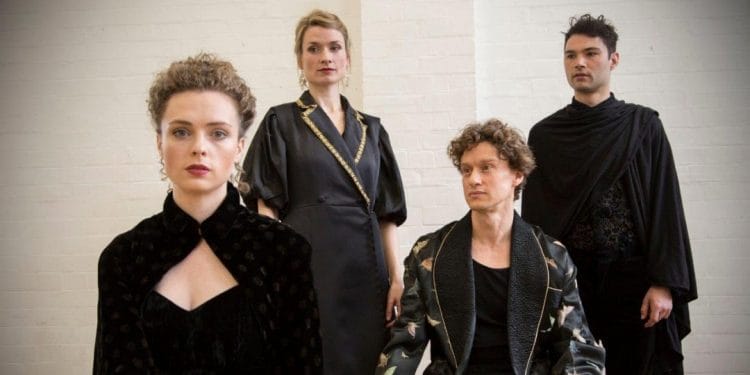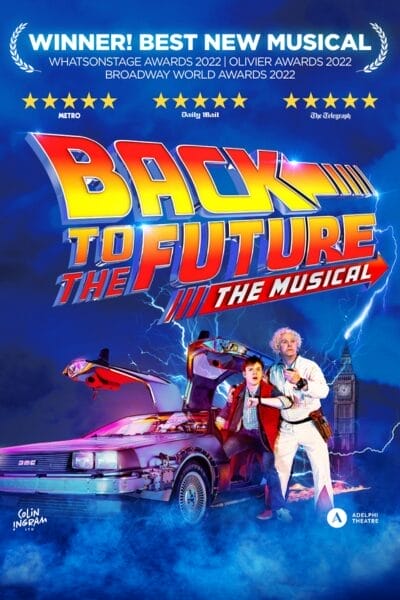Artistic Director of Jermyn Street Theatre, Tom Littler talks about Pictures of Dorian Gray, Lucy Shaw’s groundbreaking adaptation of Oscar Wilde’s Gothic parable, which received its world premiere at the Stephen Joseph Theatre, Scarborough this month before transferring to Jermyn Street Theatre in June. It plays there for five weeks before transferring to Blackwell’s Bookshop in Oxford, where it runs for a further three weeks in association with Creation Theatre.
Mixing roles and gender, the production will see the actors switch parts for each performance, giving four different casting possibilities over the course of the run.
Pictures of Dorian Gray is at Jermyn Street Theatre 5th June – 6th July 2019.
You’re bringing Pictures of Dorian Gray to Jermyn Street Theatre, what can you tell us about it?
It’s an adaptation of Oscar Wilde’s iconic novel of 1890, which tells the story of a young man – the beautiful Dorian Gray – who has his portrait painted by the artist Basil Hallward. When he sees the portrait, Dorian makes a wish: if only the picture would grow old, and he himself could always stay young. Dorian falls under the influence of an older, hedonistic aristocrat, Henry Wotton, who begins to enmesh Dorian in a life of sin and crime. And meanwhile, the portrait begins to age…
Where did the idea come from to stage a play like this?
I think the story has so much to say to us today about narcissism, self-image, the cult of youth and beauty. But it’s even deeper and richer than that. The portrait comes to represent a place where Dorian puts all the shameful things of his life. Most adaptations of the novel – and some of them are excellent – do one of two things: either they portray the glittering world of 1890s London society and Wilde’s sharp satire, or they update the story and make it directly about selfies and the internet age. Lucy Shaw, who wrote the adaptation, and I wanted to go to the heart of the story – to its mythic elements – and tell it as a dark, seductive, poetic fairytale.
Why was Lucy Shaw’s Pictures of Dorian Gray the ideal choice for a gender switching cast?
Each actor learns two roles, and each role is played (on different nights) by two actors: so if you play Dorian Gray on one night, you also play the artist Basil Hallward on another night. That means we have four combinations of casting you can see. For example, Wilde wrote Dorian and Henry Wotton, his corrupter, as two men – you can see that in Picture A. But if you see Picture B, you can see the young male Dorian being corrupted by an older woman. In Picture C, a female Dorian is painted by a male Basil and corrupted by a male Henry, and in Picture D, it’s a female Henry who seduces a female Dorian. The story and the production is the same for all four casting combinations, so in a way it doesn’t matter which one you choose to come and see – but they all resonate differently – sometimes in very surprising and shocking ways. All four of them are fascinating – just pick whichever one appeals to you, and then you can come back and see another combination for half-price!
Will audiences recognise Oscar Wilde’s influence in the play?
Oh absolutely! 90% of the words in the play are Wilde’s. It’s very much his story. It is full of his famous lines and wit. But what Lucy Shaw – who has an incredibly distinct poetic voice – has done is to arrange and edit the play into 90 minutes of magic. She has curated and arranged the words – using a mixture of dialogue and narration – in a very beautiful way that gives you the story but also the feeling of the novel. Lucy’s adaptation really focuses on the question of art: how do we make it, who gets to make it, who inspires it, what is its cost?
What have the challenges been when rehearsing?
Learning lines! I’d never normally say that, but because each actor has had to learn two roles, it was very hard work. They are all amazing actors so that’s been a joy. We’re now moving into technical rehearsals at the Stephen Joseph Theatre, Scarborough, where we open the show before bringing it to Jermyn Street Theatre. The show has a continuous sound design by the genius Matt Eaton, who’s a contemporary composer: it mingles all sorts of influences, including a lot of Chopin piano, and so the whole thing floats on his music. It’s pretty magical.
What would you say to anyone thinking of coming to see Pictures of Dorian Gray?
It doesn’t matter whether you love the book or whether you’ve never read it. And don’t worry too much about which Picture / casting combination to see – just look at the photos on the website and pick whatever intrigues you. All four are the same incredible story, told through slightly different eyes. It’s 90 minutes of fairytale and magic and wit and seduction and myth.

















